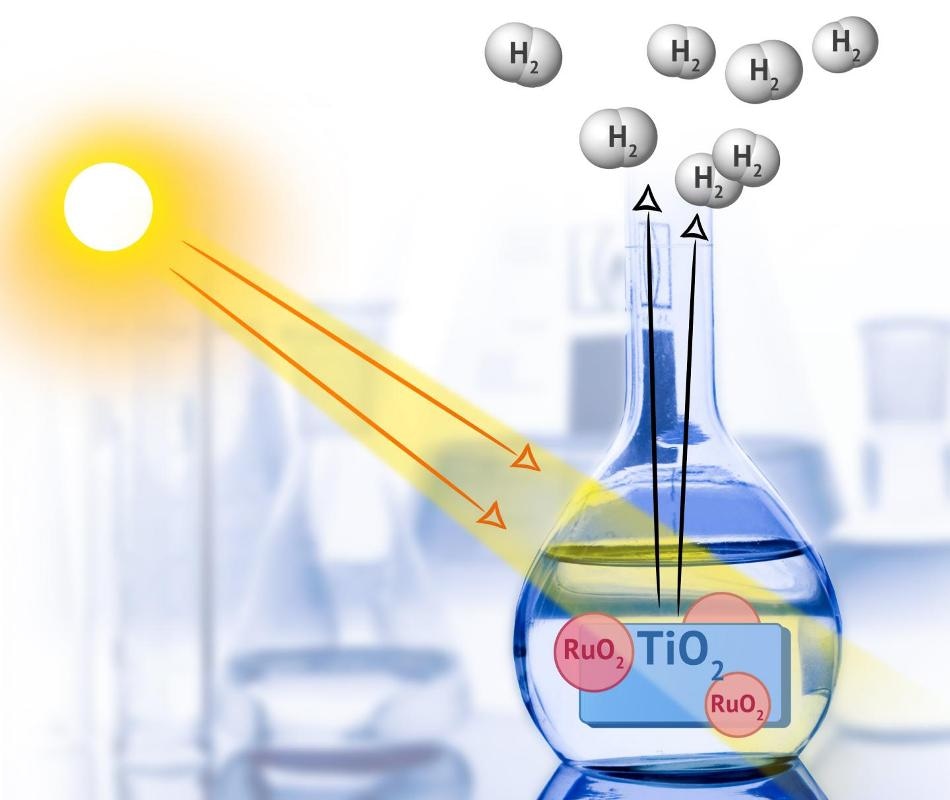In a breakthrough study, a RUDN chemist has obtained 'green' hydrogen using UV radiation, visible light and catalysts with ruthenium nanoparticles.
 Credit: Allen Dressen
Credit: Allen Dressen
The research suggests that these types of catalysts could be used for the large-scale production of hydrogen fuel under the effect of sunlight.
The findings were recently reported in the journal, Applied Catalysis B: Environmental.
One of the most eco-friendly methods of generating "green fuel" is photochemical reactions.
The proposed reactions are considered to be more eco-friendly than current methods, as they do not require the use of high-pressure machinery or high temperatures. The rate of the reaction is instead increased using photocatalysts and light.
Photocatalysts, based on palladium, gold, and platinum, are extremely efficient at catalyzing hydrogen extraction from biomass derivatives such as alcohols.
However, these metals are very costly, and as result, the researchers are looking for more economical photocatalysts.
RUDN chemists, along with Spanish coworkers, analyzed the photocatalytic activity of titanium dioxide doped with ruthenium particles and showed that they were capable of catalyzing the reaction.
The chemists tracked the effect of a titanium-dioxide-based ruthenium nanocatalyst on hydrogen emission from a mixture of water and methanol.
They subsequently examined four catalysts (with a ruthenium content of 1%, 2%, 3%, and 5%), with each being tested in two kinds of reactions—in the presence of UV radiation and visible light.
This is the first time these materials have been used to obtain hydrogen.
Before this study, ruthenium and titanium dioxide were seldom applied to photocatalysis, yet it has proven vital to define their optical properties, including quantum efficiency, and composition.
The study showed that the activity of ruthenium-containing photocatalysts under UV radiation is similar to palladium and platinum analogs.
Our catalysts based on titanium dioxide and ruthenium appeared to be universal systems and helped us obtain hydrogen in sufficient quantities both under the influence of UV light and visible light."
Raphael Luke, Director of the Center for Molecular Design and Synthesis of Innovative Compounds for Medicine
Moreover, the quantum efficiency of palladium or platinum-based compounds measured on the basis of other research makes up 1.9% to 5.1%, and the outcomes of ruthenium photocatalysts remain within this range.
The optimum value (3.1%) that was quantified for the system had a ruthenium content of 3%. The low cost of ruthenium catalysts makes them favorable for industrial applications.
It was also observed that the activity of ruthenium catalysts under visible light was relatively low.
Although the quantum efficiency did not go beyond 0.6%, the authors anticipate it to increase under the influence of sunlight up to 1.1%. This hypothesis is already being verified by the researchers.
The exact mechanism of this phenomenon is yet to be discovered. We continue our studies and are currently experimenting with obtaining hydrogen under sunlight in Spain and Russia."
Raphael Luke